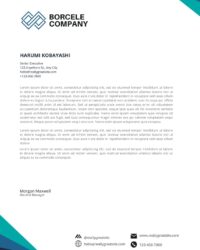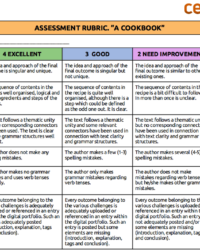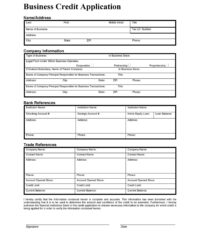Streamlined data collection and processing leads to faster credit decisions. A standardized format minimizes errors and omissions, reducing the need for back-and-forth communication between the applicant and the lender. This efficiency saves time and resources for both parties, contributing to a smoother credit application experience. Furthermore, having all necessary information readily available allows businesses to present a comprehensive financial picture, potentially strengthening their creditworthiness.
Understanding the components and benefits of a structured application process is fundamental to securing necessary financing. The following sections will explore the key elements of credit applications, offering practical guidance for businesses seeking credit lines.
Key Components of a Corporate Credit Application
A comprehensive credit application provides lenders with the necessary information to assess creditworthiness. Several key components contribute to a thorough and effective application.
1: Company Identification: This section requires basic information such as legal business name, address, contact information, and tax identification number. It establishes the legal identity of the applicant.
2: Business Background: Details regarding the industry, years in operation, ownership structure, and business description provide context for the lender to understand the applicant’s operations and market position.
3: Financial Information: This crucial section typically requires financial statements (balance sheets, income statements, cash flow statements) for the past few years. Supporting financial documentation, such as tax returns and bank statements, may also be requested.
4: Credit References: Listing existing creditors, including banks and suppliers, allows the lender to assess existing credit relationships and payment history.
5: Management Team: Information about key personnel, including their experience and qualifications, helps lenders evaluate the management team’s expertise and stability.
6: Purpose of Credit: Clearly stating the intended use of the credit facility, whether for working capital, equipment purchases, or expansion, helps the lender understand the applicant’s financial needs and strategy.
7: Authorizations: Designated individuals authorized to incur debt on behalf of the company must sign the application, legally binding the business to the terms of the credit agreement.
Accurate and complete information across these components allows lenders to make informed decisions, facilitating efficient credit evaluations and fostering a transparent and trustworthy lending process.
How to Create a Corporate Credit Application Template
Developing a standardized credit application template streamlines the process of requesting credit, ensuring consistent data collection and facilitating efficient lender review.
1: Define Required Information: Determine the essential data points needed to assess creditworthiness. This includes company identification, business background, financial information, credit references, management team details, purpose of credit, and authorizations.
2: Structure the Template: Organize the template logically into distinct sections, using clear headings and subheadings. This enhances readability and ensures all necessary information is captured systematically.
3: Use Clear and Concise Language: Employ straightforward language, avoiding jargon or technical terms that may confuse applicants. Instructions should be unambiguous and easy to understand.
4: Incorporate Required Disclosures: Include any necessary legal disclaimers or disclosures related to credit terms, interest rates, and applicable regulations.
5: Ensure Accessibility and Compatibility: Provide the template in a widely accessible format, such as a downloadable PDF or online form. Ensure compatibility with various software and devices.
6: Test and Refine: Pilot test the template with internal stakeholders and potential applicants to identify areas for improvement. Refine the template based on feedback to optimize clarity and usability.
7: Implement and Maintain: Deploy the standardized template across the organization. Regularly review and update the template to reflect changes in regulations or business needs.
A well-designed template ensures consistent data capture, improves efficiency in credit processing, and contributes to a more transparent and streamlined application experience. Regular review and refinement maintain relevance and efficacy.
Standardized forms for requesting business credit lines serve as crucial instruments for facilitating efficient financing processes. These structured applications ensure consistent data collection, enabling lenders to effectively assess creditworthiness based on comprehensive information regarding company background, financial standing, and intended credit usage. Streamlined data collection and clear communication between applicants and lenders contribute to informed decision-making and contribute to a smoother, more transparent credit application experience.
Effective management of credit applications contributes significantly to the financial health and growth potential of businesses. Leveraging well-designed templates and adhering to best practices in credit application procedures position organizations for success in securing the financial resources necessary to achieve strategic objectives.


